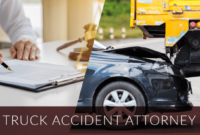Connecticut auto accident laws – Navigating the aftermath of a car accident can be a daunting task, but understanding Connecticut’s auto accident laws can empower you to protect your rights and seek fair compensation. This comprehensive guide delves into the intricacies of fault, liability, insurance coverage, and legal procedures, providing you with the knowledge to make informed decisions and navigate the legal landscape effectively.
Overview of Connecticut Auto Accident Laws

Connecticut’s auto accident laws are designed to provide a framework for resolving disputes and ensuring fair compensation for victims. The legal framework governing auto accidents in Connecticut is based on a fault-based insurance system, comparative negligence, and a statute of limitations.
Connecticut auto accident laws are designed to protect the rights of drivers and passengers involved in car accidents. These laws cover a wide range of topics, including fault determination, insurance coverage, and compensation for injuries. For more information on auto accident laws in other states, such as michigan auto accident law , it is important to consult with an experienced legal professional.
Connecticut auto accident laws can be complex, and it is important to understand your rights and responsibilities if you are involved in an accident.
The fault-based insurance system in Connecticut means that the driver who is at fault for causing an accident is responsible for paying for the damages caused by the accident. This includes both property damage and personal injuries.
Connecticut auto accident laws mandate that drivers carry liability insurance. However, in some cases, the at-fault party may not have insurance. If you are involved in an accident with an uninsured driver, you may be able to file a claim with your own insurance company under the uninsured motorist coverage provision.
Texas auto accident laws are similar to Connecticut’s in this regard, requiring drivers to carry liability insurance and providing for uninsured motorist coverage.
Comparative negligence is a legal doctrine that allows the courts to apportion fault between the drivers involved in an accident. This means that even if one driver is more at fault than the other, the other driver may still be able to recover some compensation for their damages.
Connecticut auto accident laws are complex and can be difficult to understand. If you have been involved in a car accident in Connecticut, it is important to speak to an experienced attorney who can help you understand your rights and options.
Michigan auto law is also complex and can be difficult to understand. If you have been involved in a car accident in Michigan, it is important to speak to an experienced attorney who can help you understand your rights and options.
Connecticut auto accident laws are designed to protect the rights of victims of car accidents.
The statute of limitations for filing a personal injury lawsuit in Connecticut is two years from the date of the accident. This means that if you are injured in an auto accident, you must file a lawsuit within two years of the date of the accident in order to recover compensation for your injuries.
Insurance Coverage
All drivers in Connecticut are required to carry liability insurance. Liability insurance provides coverage for damages that you cause to other people or their property in an accident. The minimum amount of liability insurance required in Connecticut is $25,000 per person and $50,000 per accident for bodily injury, and $25,000 per accident for property damage.
Understanding Connecticut auto accident laws is crucial for navigating legal proceedings after a collision. These laws determine fault, compensation, and insurance coverage. While each state has its own unique laws, there are similarities with other states like Alabama. For instance, alabama auto accident laws also address comparative negligence, where both parties may share responsibility for an accident.
However, it’s essential to consult local legal counsel to fully grasp the intricacies of Connecticut auto accident laws and protect your rights.
Statute of Limitations
The statute of limitations for filing a personal injury lawsuit in Connecticut is two years from the date of the accident. This means that if you are injured in an auto accident, you must file a lawsuit within two years of the date of the accident in order to recover compensation for your injuries.
Determining Fault and Liability
In Connecticut, auto accidents are governed by a fault-based system, meaning that the driver who caused the accident is financially responsible for damages. Determining fault can be complex, involving an analysis of the circumstances surrounding the crash.
Factors Considered
Several factors are considered when determining fault in Connecticut auto accidents:
Negligence: A driver is negligent if they fail to exercise reasonable care while operating a vehicle. This includes failing to obey traffic laws, driving while intoxicated, or being distracted while driving.
Contributory Negligence: If a driver’s own negligence contributed to the accident, they may be barred from recovering damages. However, Connecticut follows a modified comparative fault system, which allows a driver to recover damages even if they were partially at fault.
Comparative Fault: Under comparative fault, damages are apportioned based on the percentage of fault attributed to each driver. For example, if a driver is found to be 70% at fault for an accident, they can only recover 30% of their damages from the other driver.
Examples of Common Scenarios
* Rear-end collision: Typically, the rear driver is found to be at fault for failing to maintain a safe following distance.
* Intersection collision: Fault may be apportioned based on who had the right-of-way, whether either driver ran a red light, or if one driver failed to yield.
* Head-on collision: Fault is often disputed in head-on collisions, and a thorough investigation is typically required to determine which driver was at fault.
Insurance Coverage and Claims: Connecticut Auto Accident Laws

Connecticut auto insurance laws mandate specific types and minimum amounts of coverage for all registered vehicles. Understanding these coverages and the claims process is crucial for protecting your rights after an accident.
Connecticut auto accident laws are complex and can be difficult to navigate without legal assistance. An auto accident law office can help you understand your rights and options after a car accident. They can also help you file a claim with the insurance company and negotiate a settlement.
If necessary, they can also represent you in court.
Types of Auto Insurance Coverage
Liability Coverage: Covers damages and injuries caused to others in an accident you are at fault for.
Collision Coverage: Covers damages to your own vehicle, regardless of fault.
Uninsured/Underinsured Motorist Coverage: Provides compensation if you are injured by a driver who is uninsured or underinsured.
Filing an Insurance Claim, Connecticut auto accident laws
After an accident, it is important to file an insurance claim promptly. Deadlines vary by insurance company, but it is generally recommended to report the accident within 24-48 hours.
When filing a claim, you will need to provide the following information:
Policy number
Date, time, and location of the accident
Names and contact information of all parties involved
Police report number (if applicable)
Photos of the damage
Potential Disputes
Insurance disputes can arise when there is disagreement about fault, coverage, or the amount of damages. These disputes are typically resolved through negotiation or mediation. If a resolution cannot be reached, the matter may be taken to court.
Compensation for Damages

In Connecticut, victims of auto accidents may be entitled to compensation for various damages incurred as a result of the accident. These damages can be categorized into two main types: economic and non-economic.
Economic Damages
Economic damages are those that can be objectively calculated and documented, such as:
Medical expenses (past, present, and future)
Lost wages and benefits
Property damage
Loss of earning capacity
Funeral expenses (in the case of wrongful death)
Non-Economic Damages
Non-economic damages, on the other hand, are more subjective and difficult to quantify. They compensate for the victim’s intangible losses, such as:
Pain and suffering
Emotional distress
Loss of enjoyment of life
Disfigurement
Loss of consortium (for spouses or other family members)
The amount of compensation awarded for damages will depend on several factors, including the severity of the injuries, the extent of economic losses, and the degree of non-economic harm suffered.
Legal Representation and Trial Procedures
An attorney plays a crucial role in handling auto accident cases. They provide legal guidance, represent clients in negotiations and court proceedings, and advocate for their rights.
The steps involved in a personal injury lawsuit typically include:
Filing a complaint and serving it on the defendant
Discovery, where both parties exchange information and evidence
Settlement negotiations, where the parties attempt to reach an agreement
Trial, where a judge or jury decides the case
Preserving evidence and building a strong case are essential. This includes gathering medical records, witness statements, and accident reports. A well-prepared case increases the chances of a favorable outcome.
Commonly Asked Questions
What is the statute of limitations for filing an auto accident lawsuit in Connecticut?
Two years from the date of the accident.
What types of damages can I recover in an auto accident lawsuit?
Medical expenses, lost wages, pain and suffering, and property damage.
What is the role of an attorney in an auto accident case?
An attorney can provide legal guidance, negotiate with insurance companies, and represent you in court.




